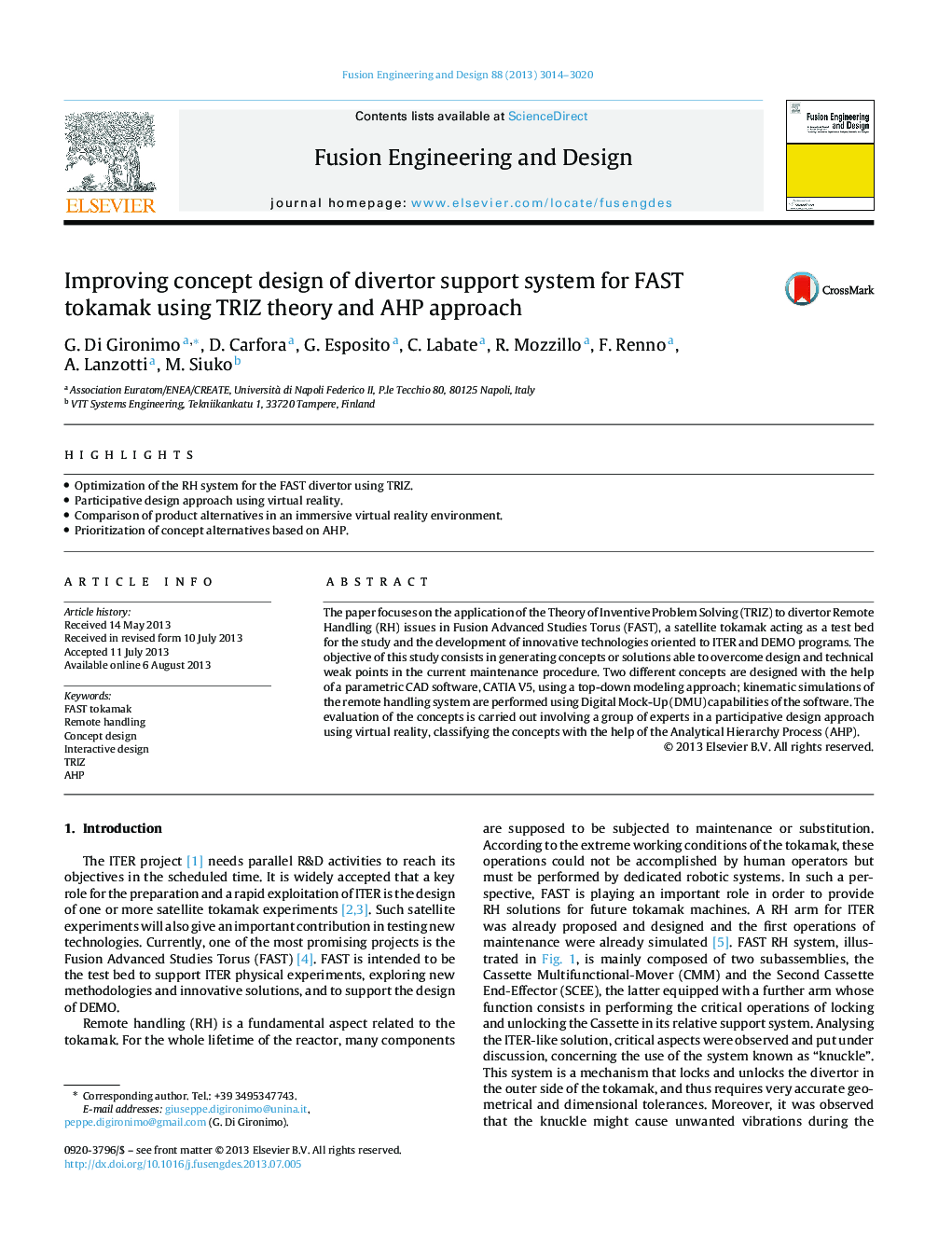| کد مقاله | کد نشریه | سال انتشار | مقاله انگلیسی | نسخه تمام متن |
|---|---|---|---|---|
| 271400 | 504994 | 2013 | 7 صفحه PDF | دانلود رایگان |

• Optimization of the RH system for the FAST divertor using TRIZ.
• Participative design approach using virtual reality.
• Comparison of product alternatives in an immersive virtual reality environment.
• Prioritization of concept alternatives based on AHP.
The paper focuses on the application of the Theory of Inventive Problem Solving (TRIZ) to divertor Remote Handling (RH) issues in Fusion Advanced Studies Torus (FAST), a satellite tokamak acting as a test bed for the study and the development of innovative technologies oriented to ITER and DEMO programs. The objective of this study consists in generating concepts or solutions able to overcome design and technical weak points in the current maintenance procedure. Two different concepts are designed with the help of a parametric CAD software, CATIA V5, using a top-down modeling approach; kinematic simulations of the remote handling system are performed using Digital Mock-Up (DMU) capabilities of the software. The evaluation of the concepts is carried out involving a group of experts in a participative design approach using virtual reality, classifying the concepts with the help of the Analytical Hierarchy Process (AHP).
Journal: Fusion Engineering and Design - Volume 88, Issue 11, November 2013, Pages 3014–3020